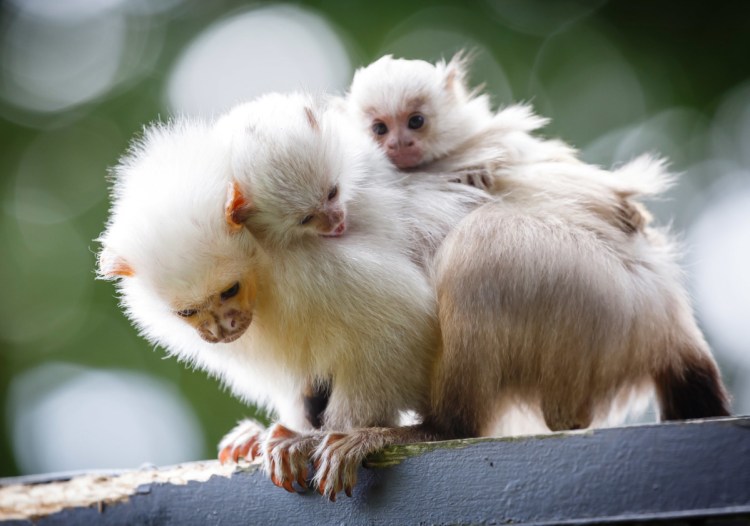Marmoset monkeys exist on a branch of the evolutionary tree that is distinct from the one that led to humans. But these fellow primates consistently astonish researchers with social behavior that seems, well, pretty highly evolved.
Marmosets engage in rigorously polite patterns of communication and do not talk over or interrupt each other. Though territorial, they are so inquisitive that they will watch videos of marmosets they do not know and learn from them.
Marmosets’ social organization and child-rearing practices could have been the model for the phrase “it takes a village.” A dominant male and female breed, and their babies are meticulously looked after by extended family members who then aren’t free to breed themselves.
A new study further burnishes the marmoset’s reputation for admirable community values. Researchers report that these caregivers share their food more generously with little ones in private than when they’re surrounded by the watchful eyes of other community members.
Such seemingly selfless behavior makes the common marmoset a particular puzzle for researchers keen to explain the already-perplexing phenomenon of altruism in humans and a few other higher-order primates.
After all, in stark evolutionary terms, kindness, generosity and self-sacrifice make no sense. When an individual’s survival and the propagation of his genes arguably depend on his hoarding every advantage for himself, why on earth would he forfeit anything to benefit a fellow member of his species?
For marmosets, it’s hard enough to explain the willingness of some family members to delay or forgo breeding to help out with a relative’s offspring. But to share food with those babies when no one’s looking? That just defies all expectations.
Researchers have come up with a few widely embraced explanations for altruistic behavior.
Boosting the prospects of a relative’s child does help propagate at least a few of an individual’s genes, and thus seems a good general explanation for self-sacrificing behavior. But specific acts, like sharing a delicious cricket with a begging baby marmoset, seem to need more specific explanation.
One possibility is that an individual practices generosity as a means of enhancing his status among peers. By demonstrating that he is so well-endowed with material goods that he can give some away, this do-gooder enhances his prestige within the group. That, in turn, may appeal to prospective mates.
The other explanation for charitable behavior posits that kindnesses extended to others are simply the dues of group membership, which offers some future promise of a chance to mate. Failure to share would result in expulsion from the group and a loss of prospective partners. Scientists call this the “pay to stay” model.
Importantly, for both of these models to work, acts of kindness must have an audience. And yet, in 2,581 trials conducted with 31 adult and 14 baby marmosets, the opposite appeared to be true.
Send questions/comments to the editors.



Success. Please wait for the page to reload. If the page does not reload within 5 seconds, please refresh the page.
Enter your email and password to access comments.
Hi, to comment on stories you must . This profile is in addition to your subscription and website login.
Already have a commenting profile? .
Invalid username/password.
Please check your email to confirm and complete your registration.
Only subscribers are eligible to post comments. Please subscribe or login first for digital access. Here’s why.
Use the form below to reset your password. When you've submitted your account email, we will send an email with a reset code.